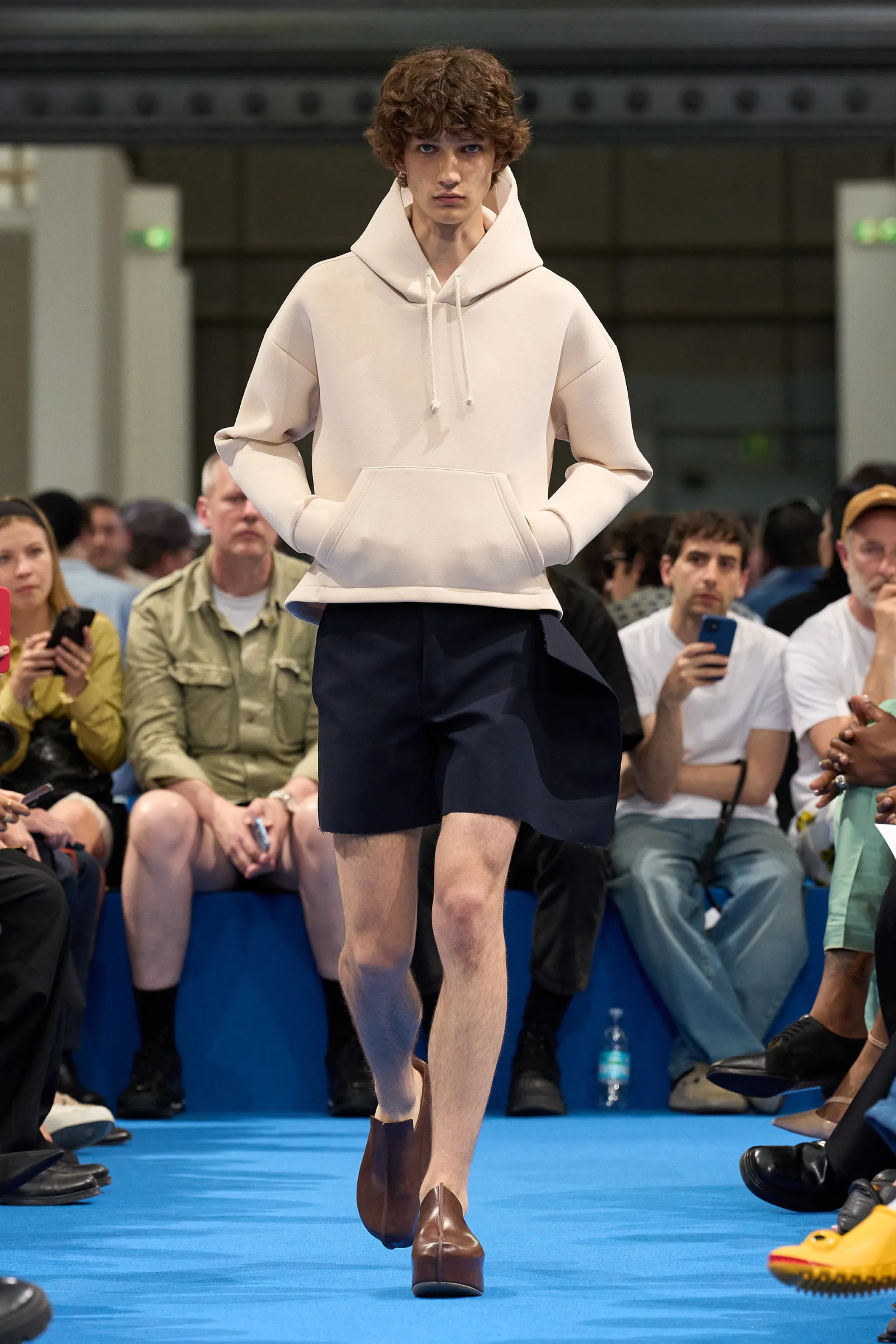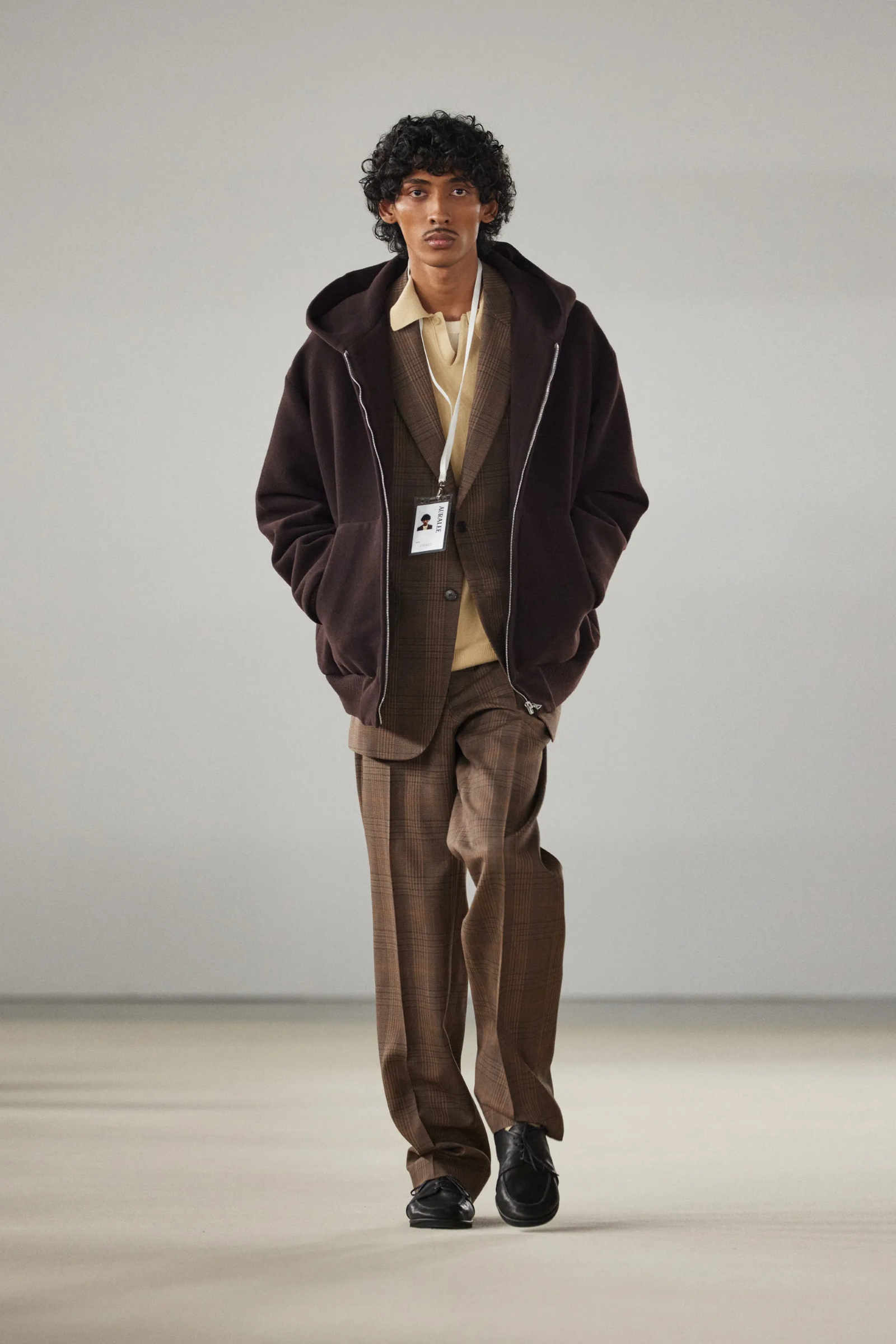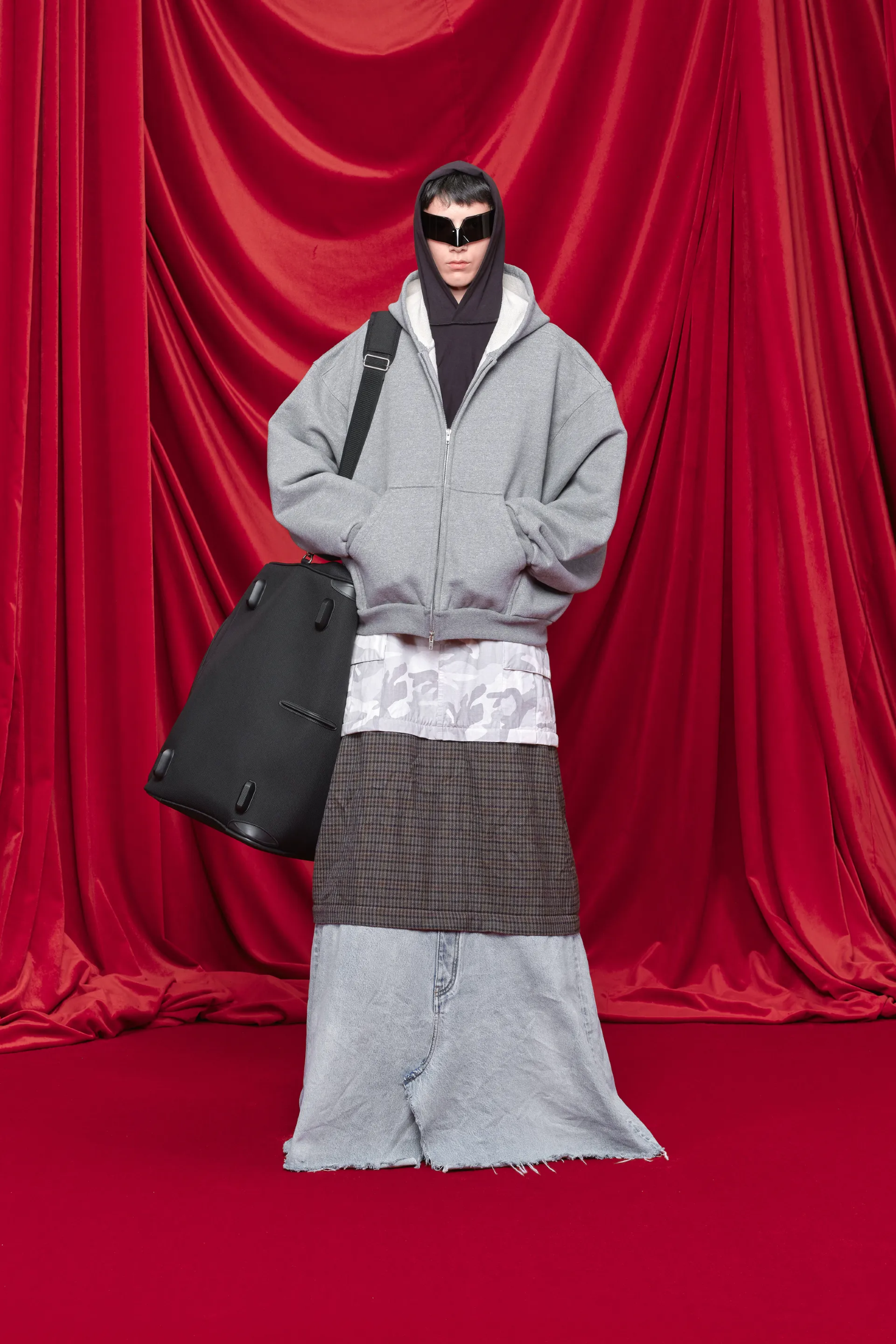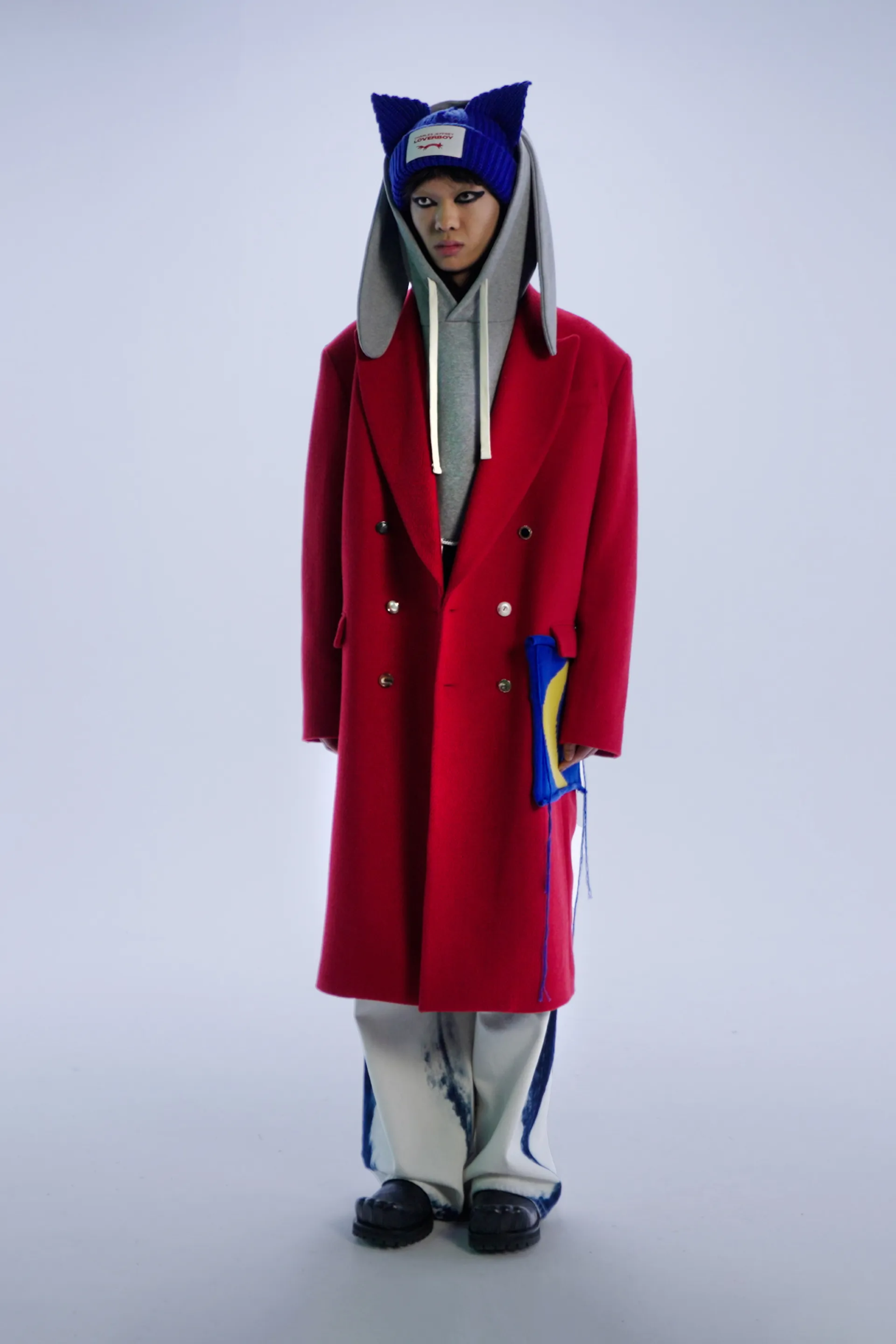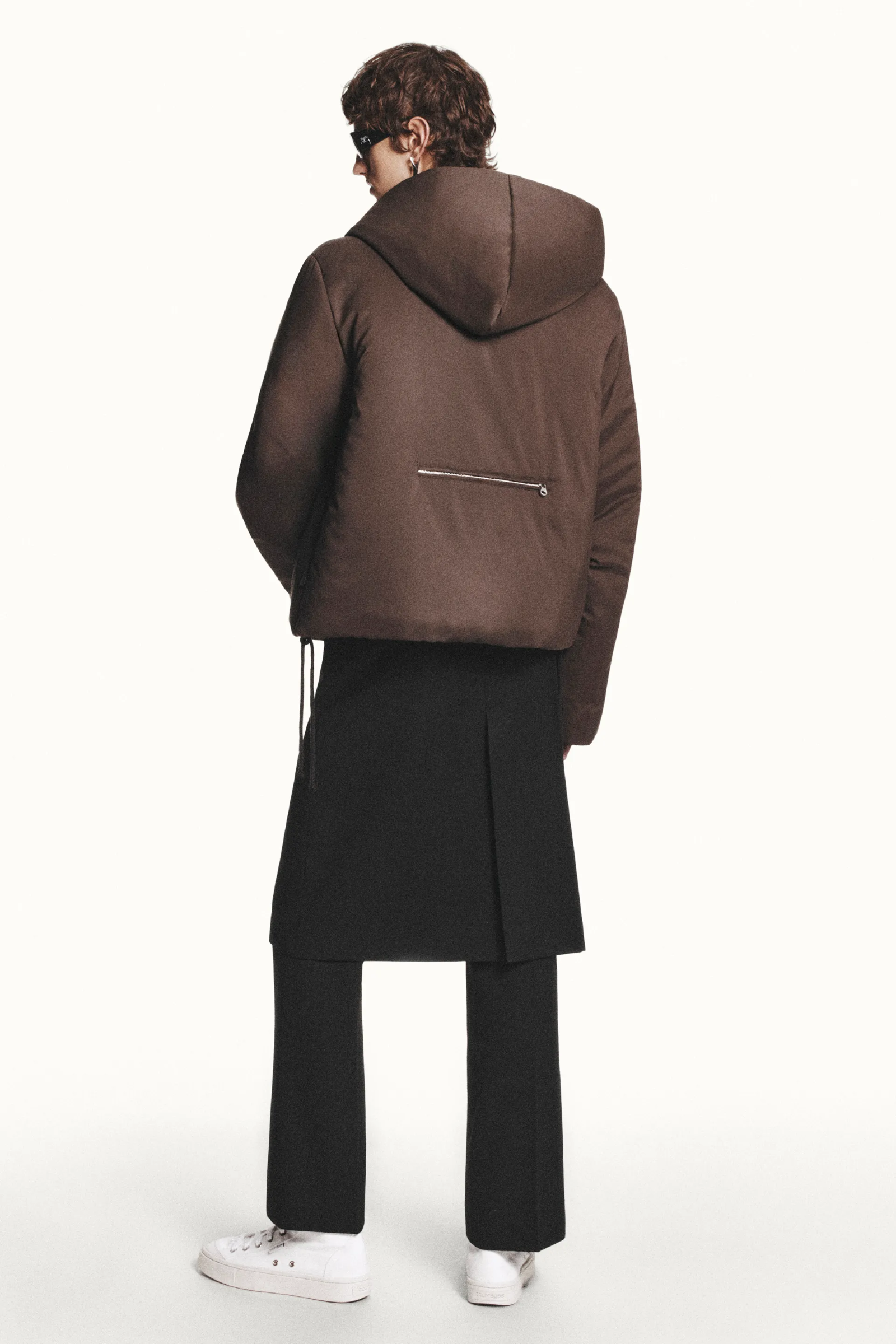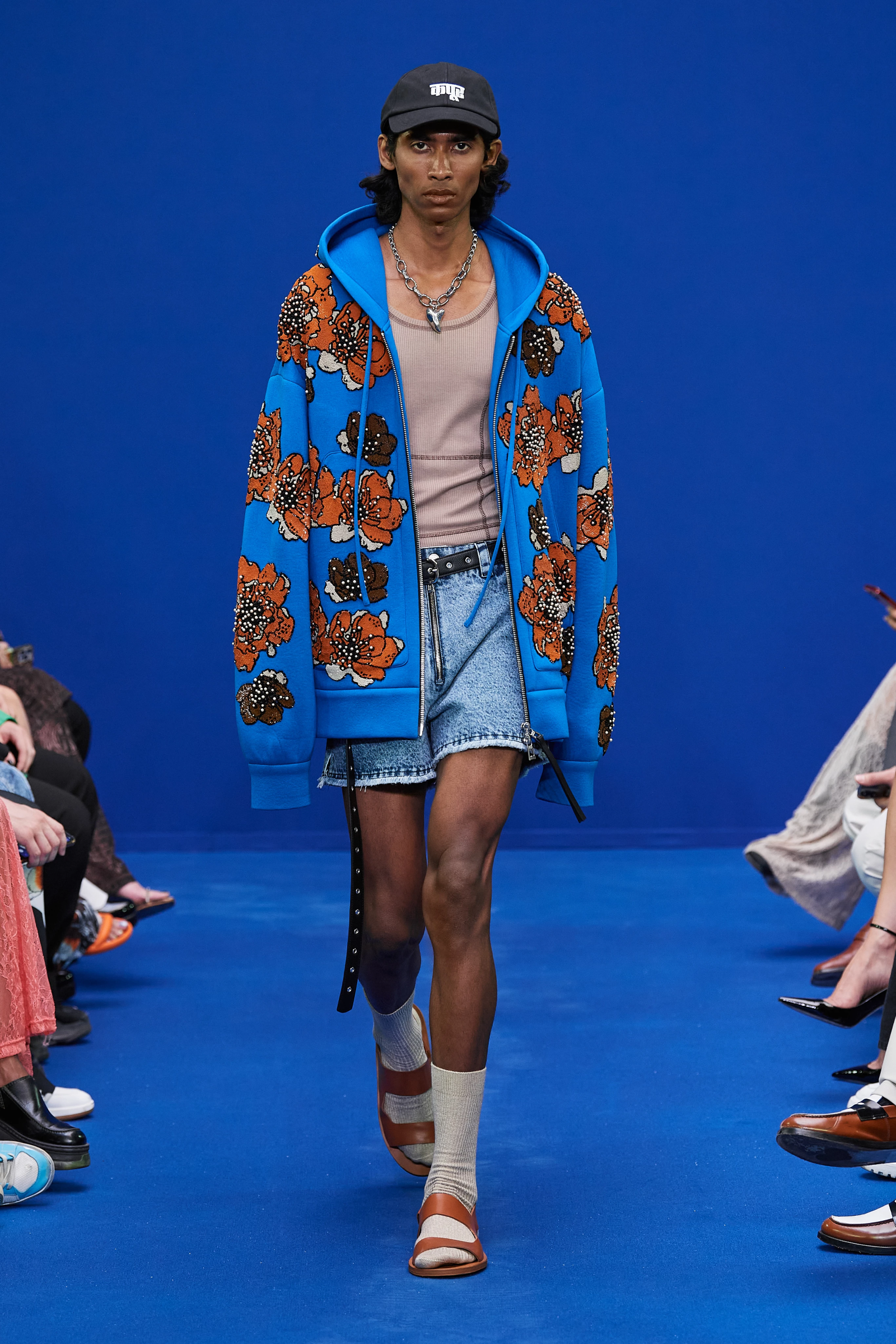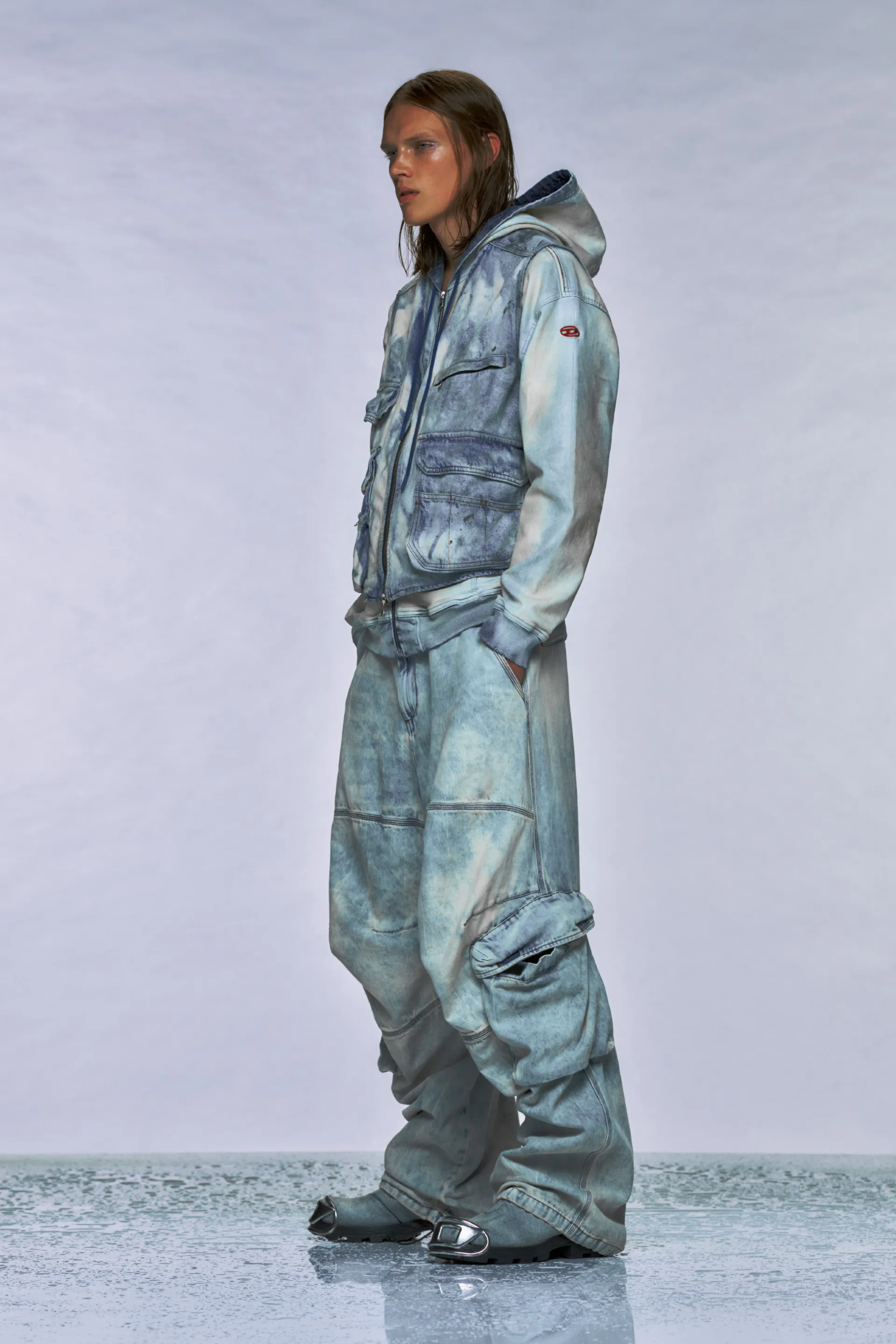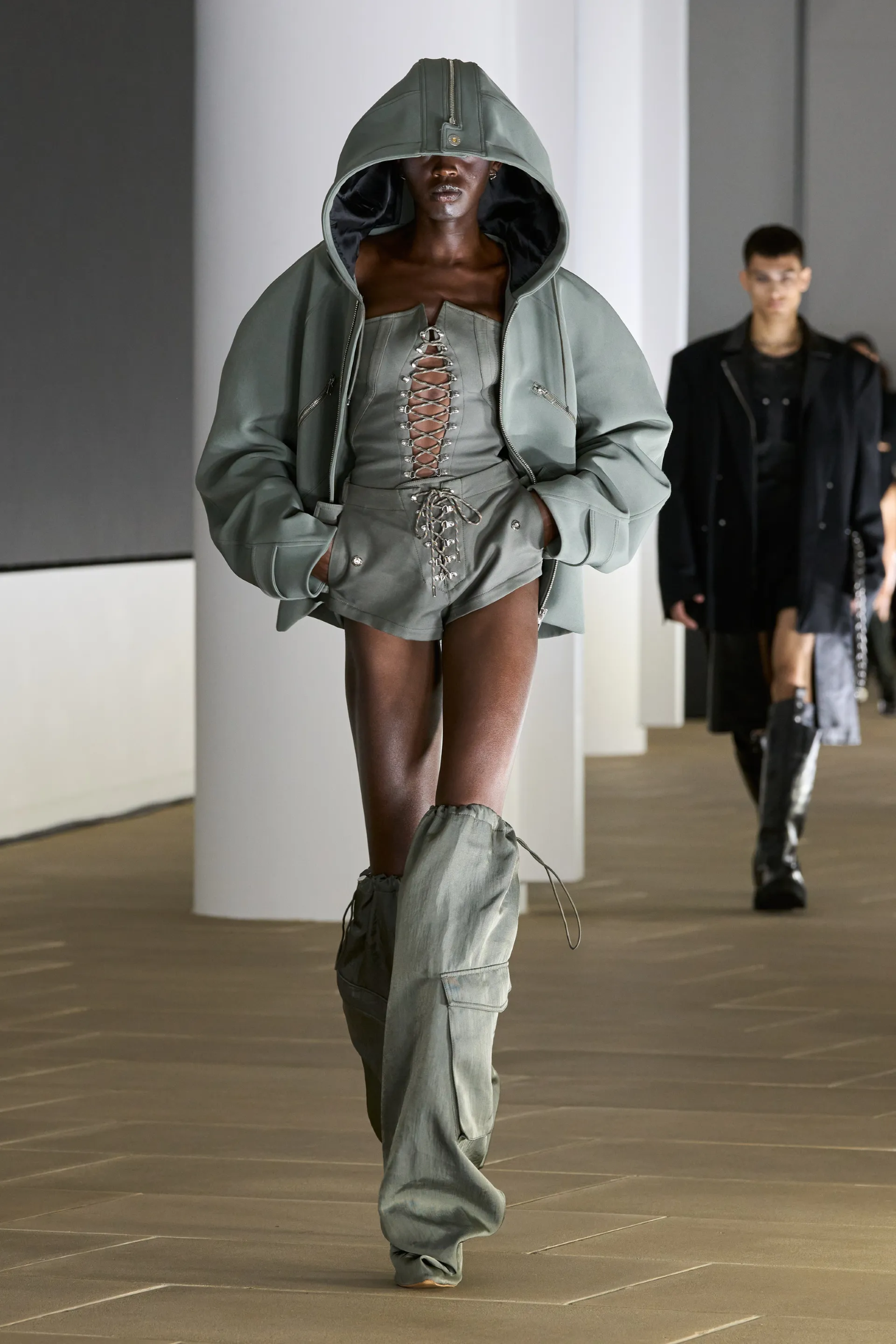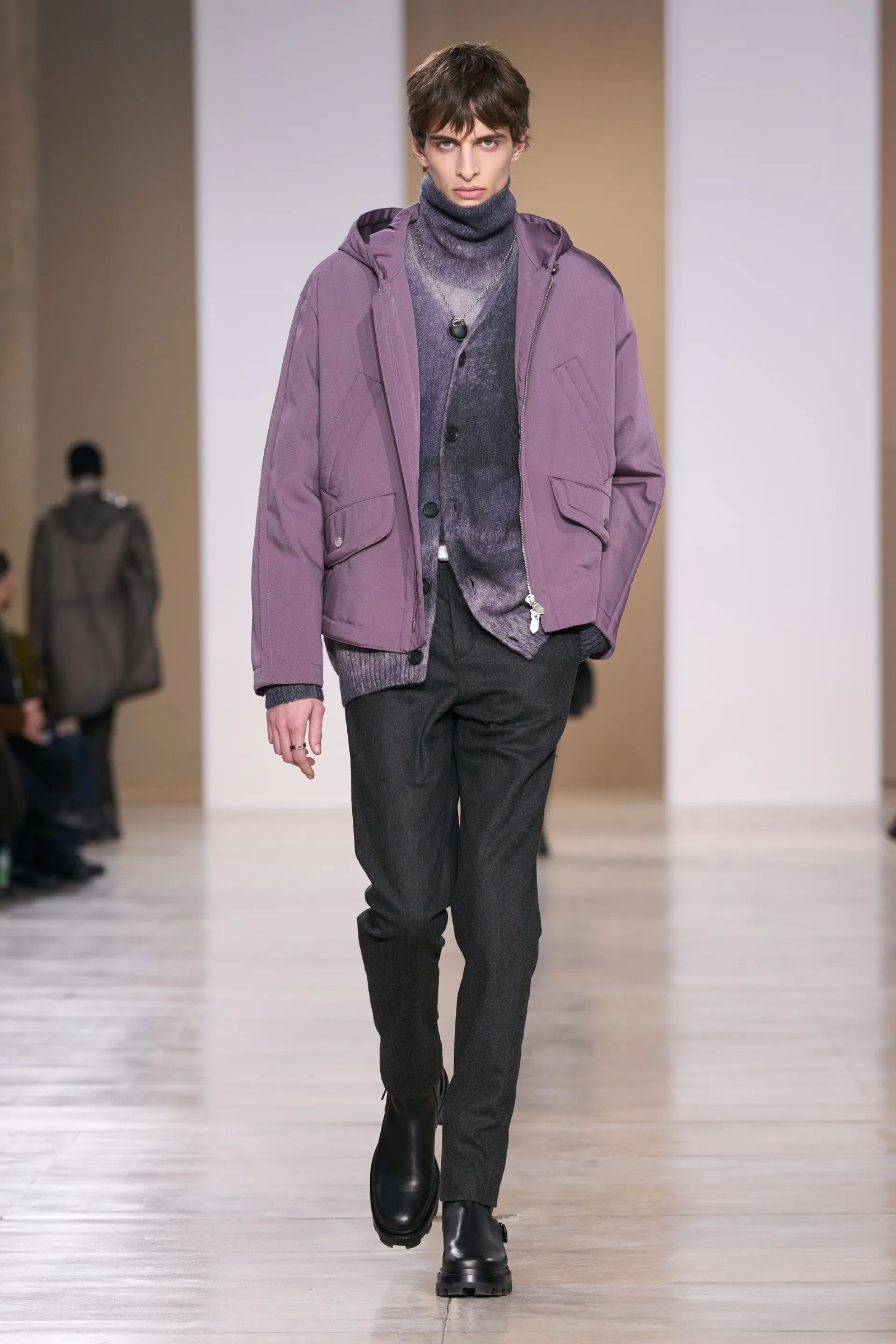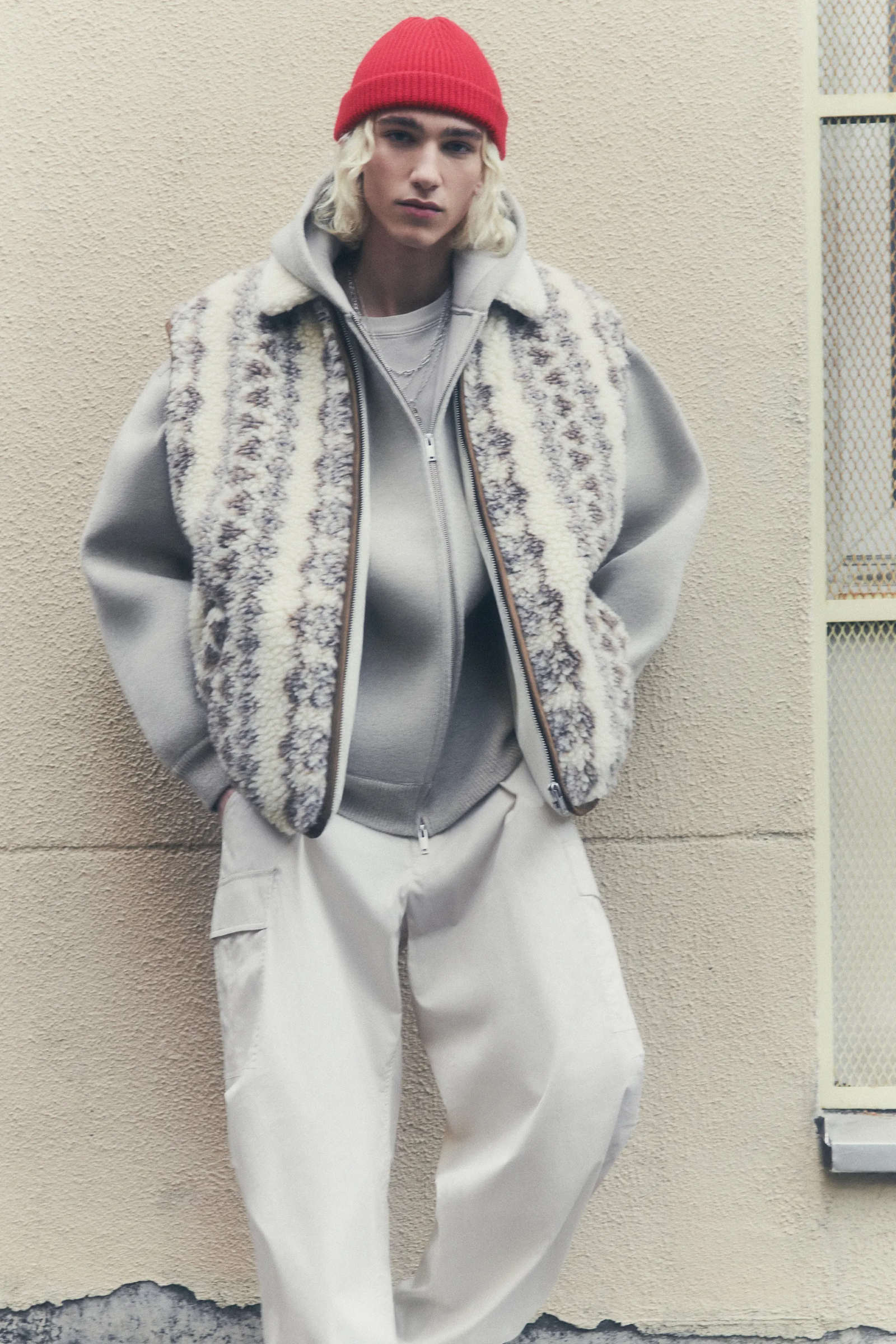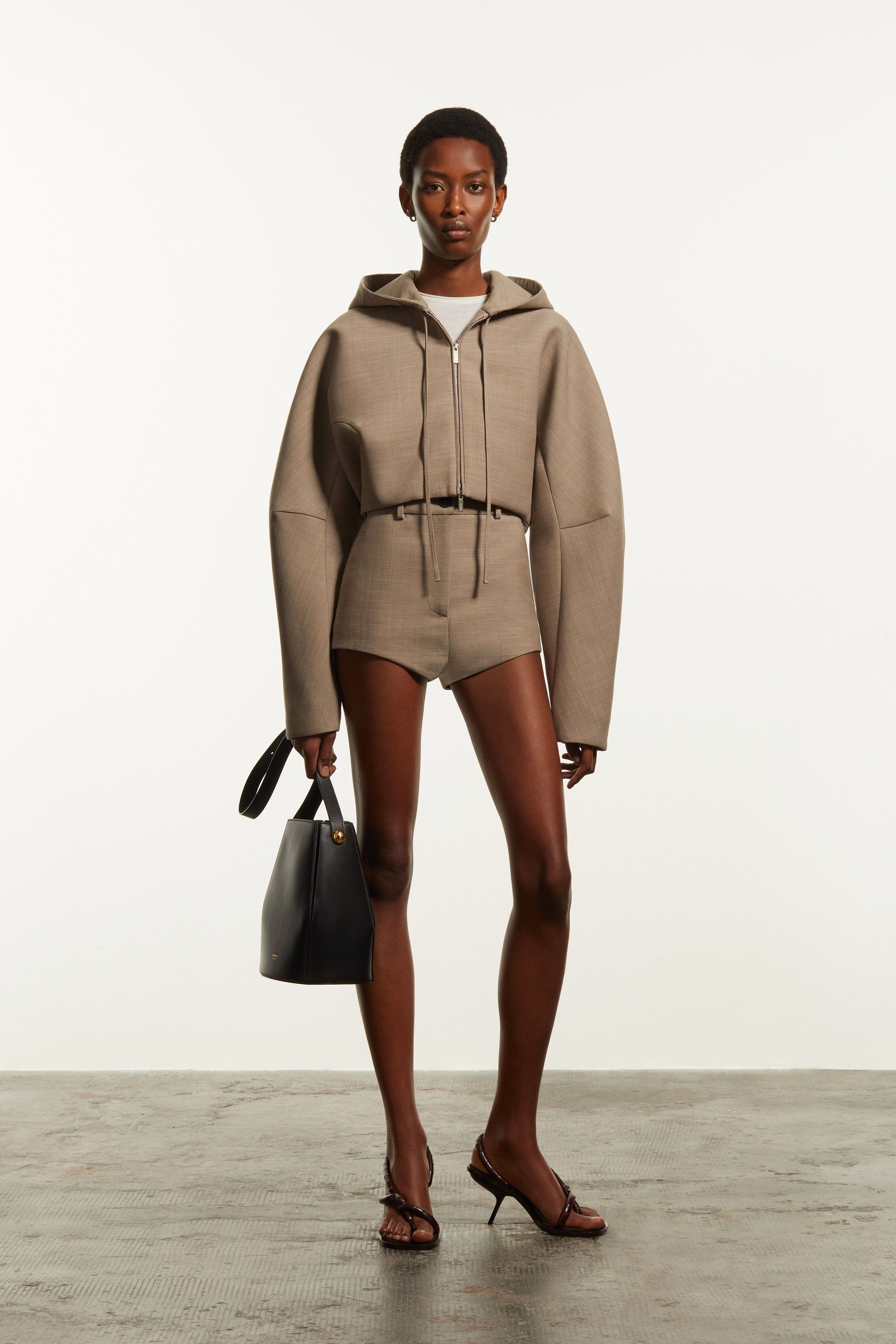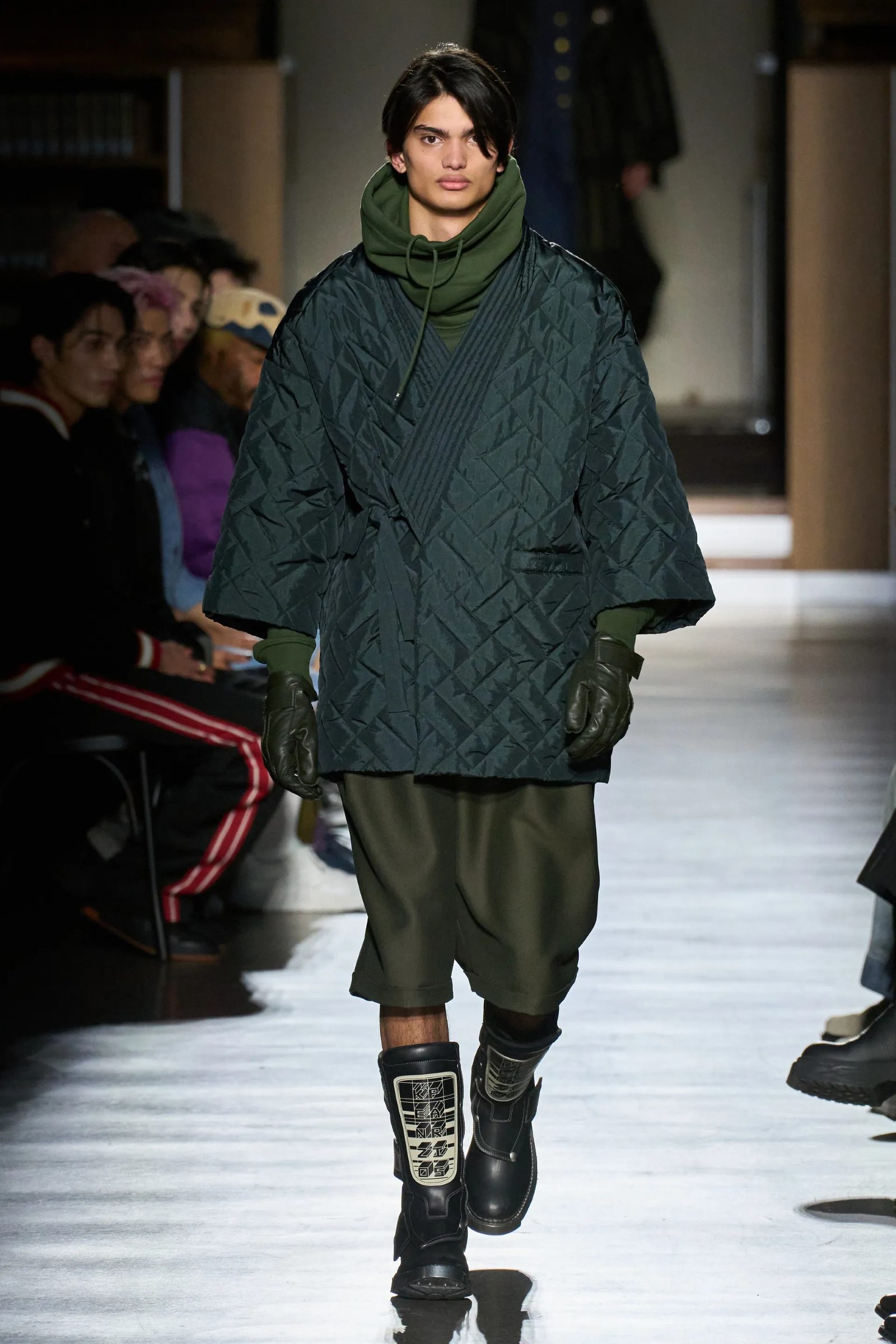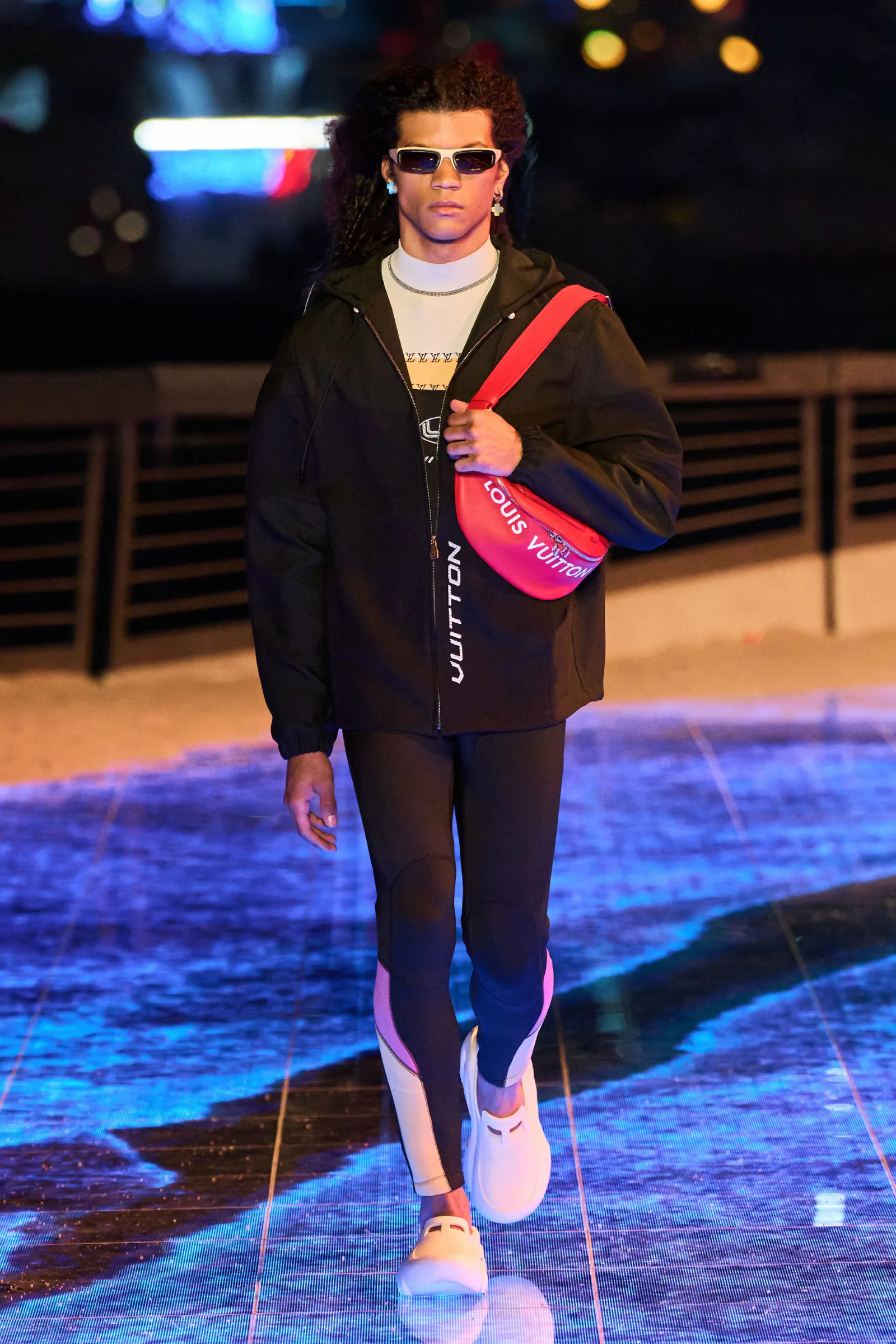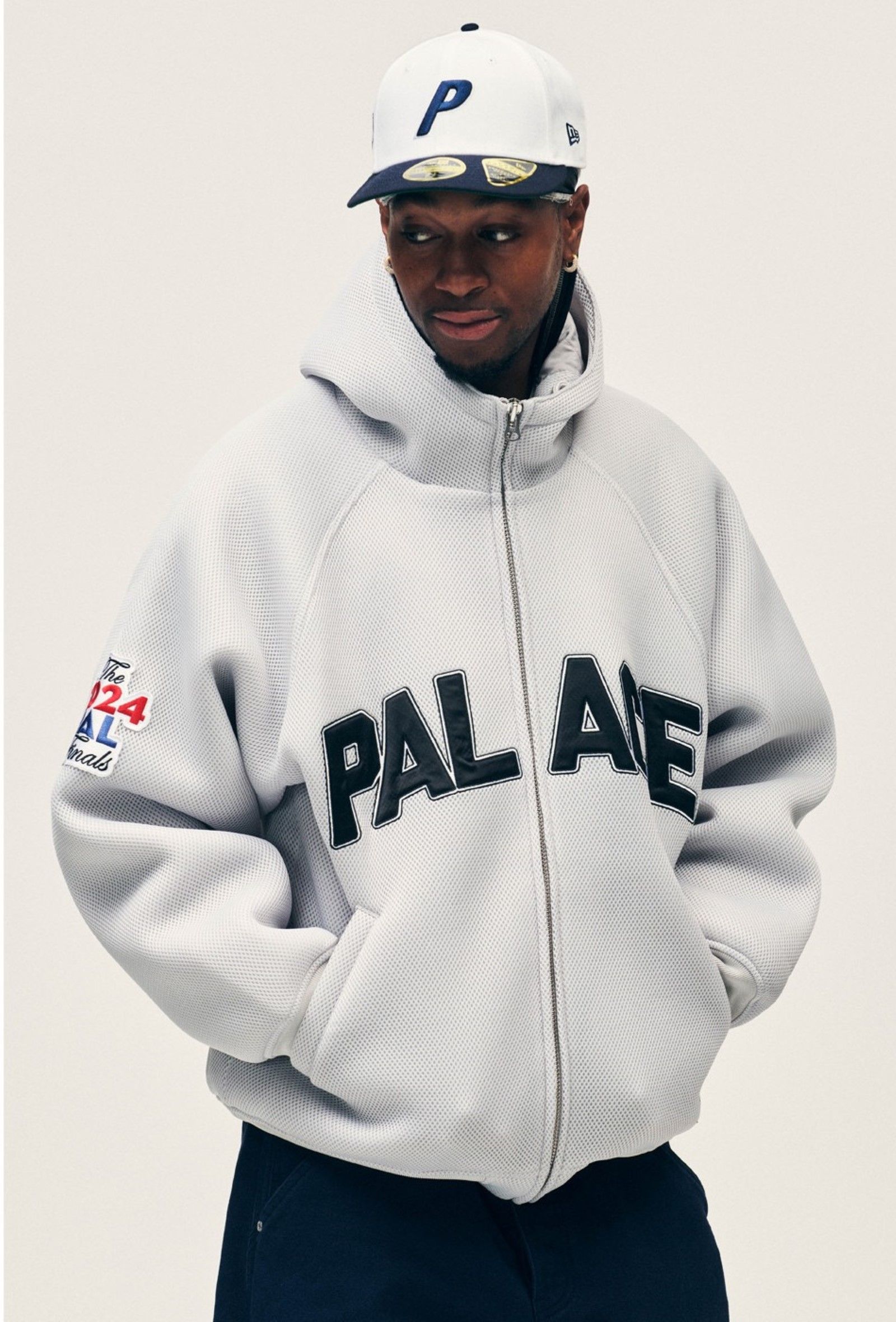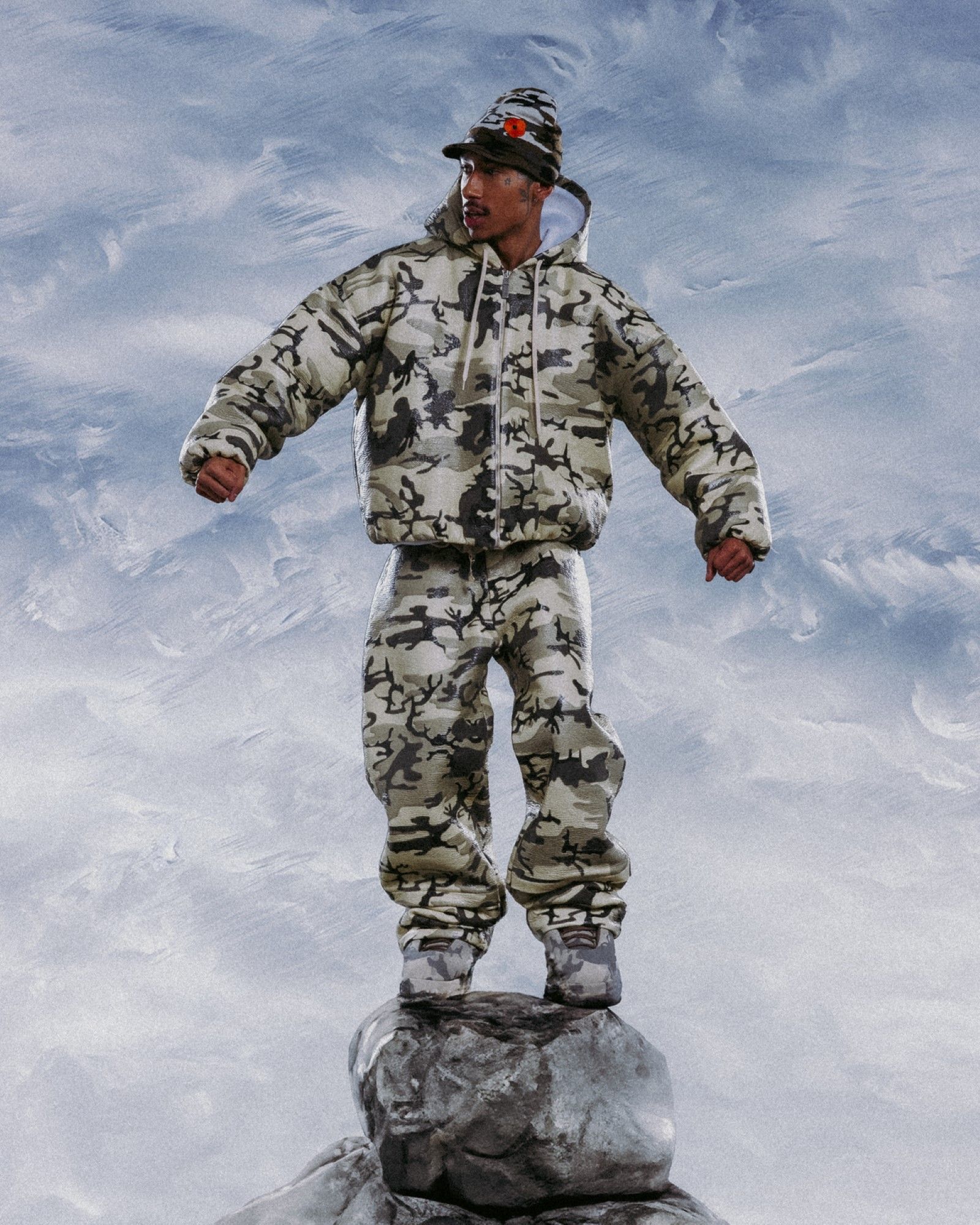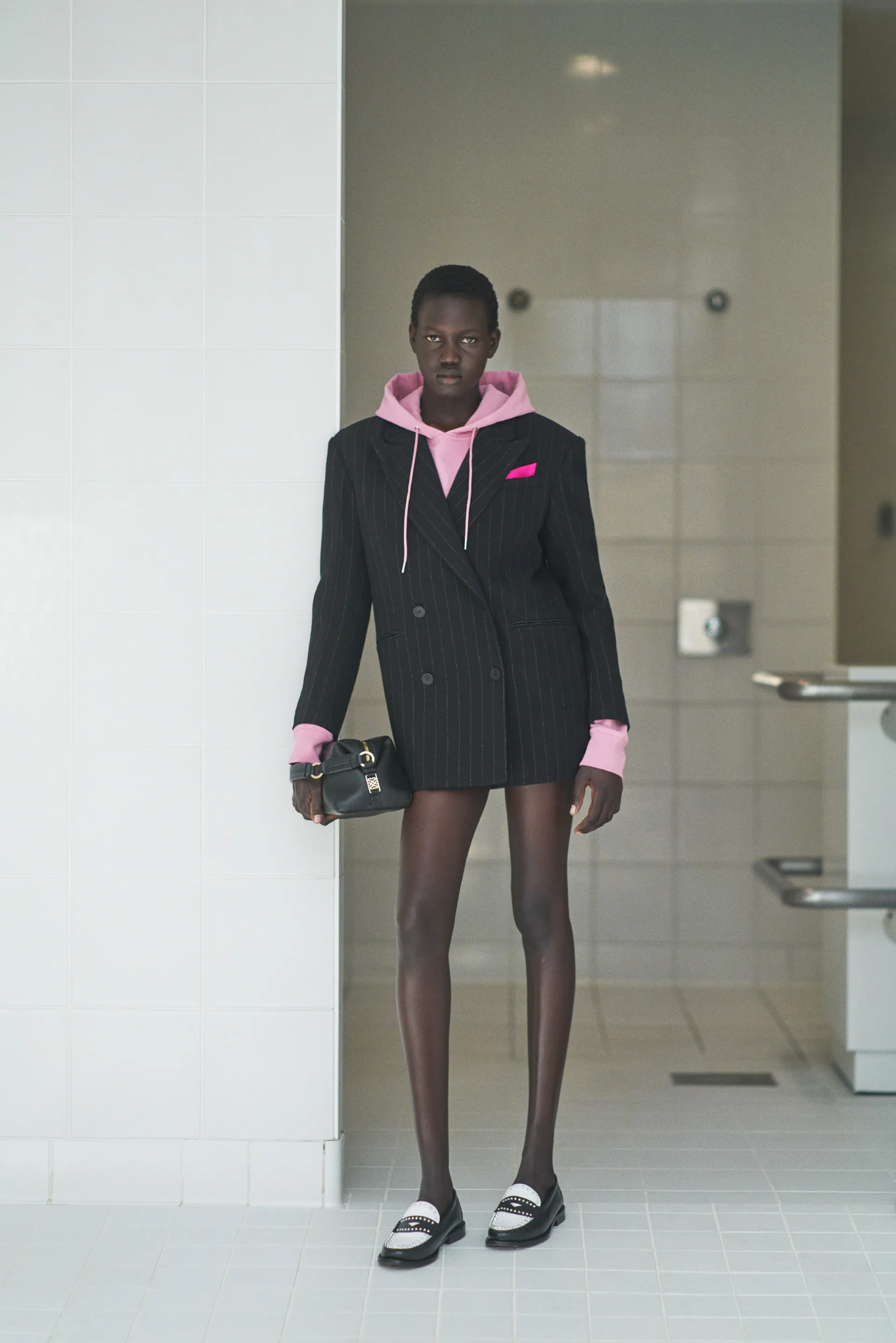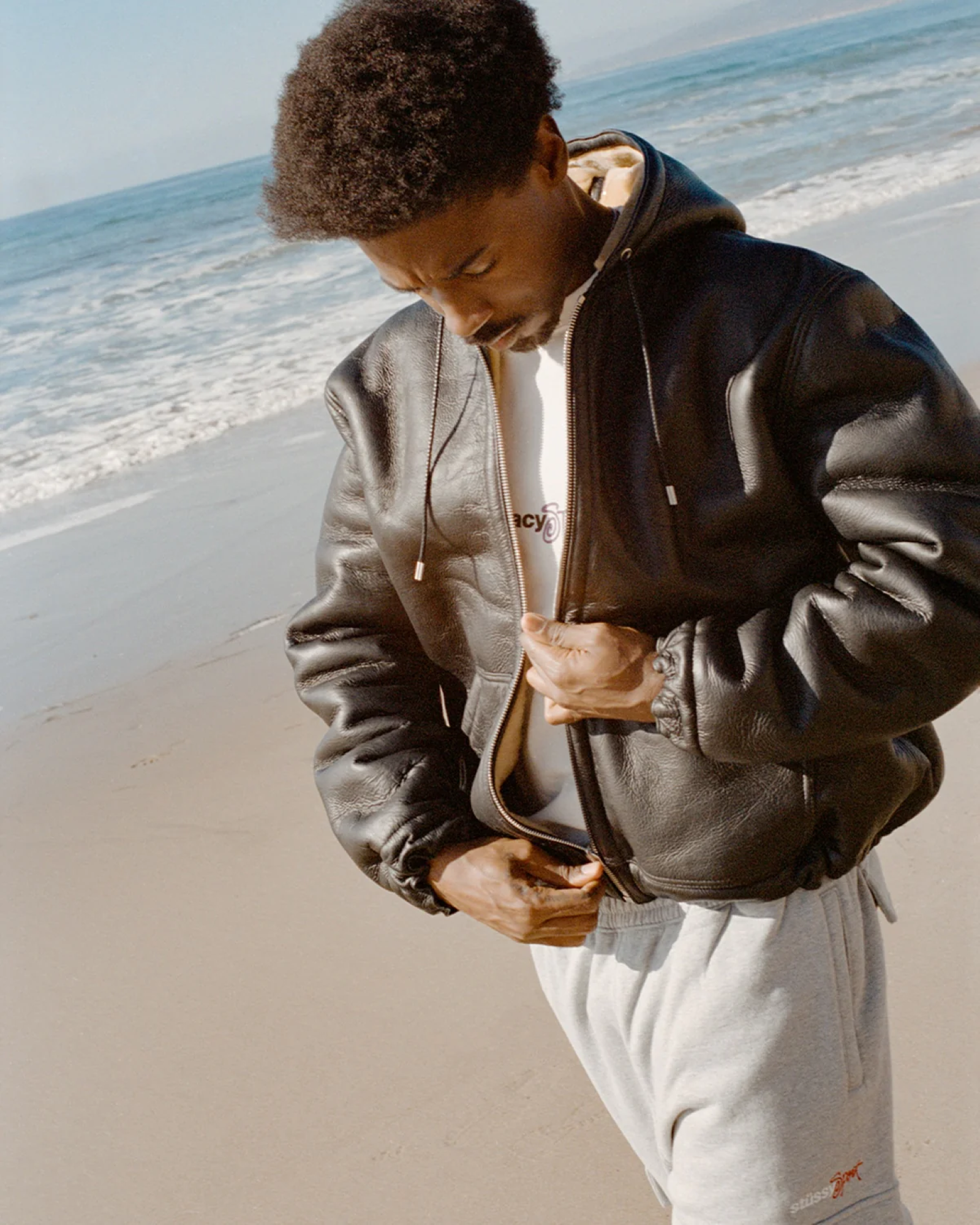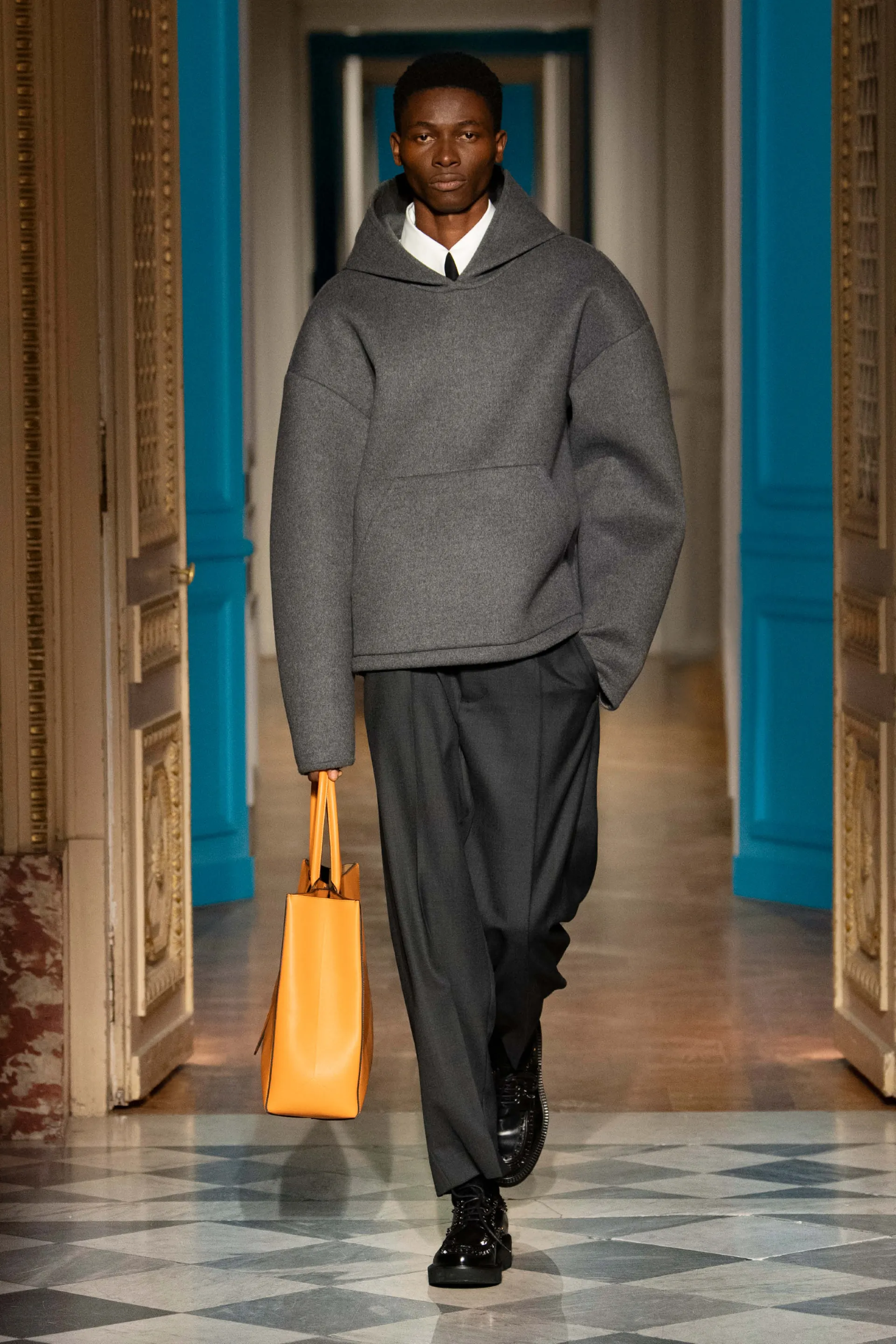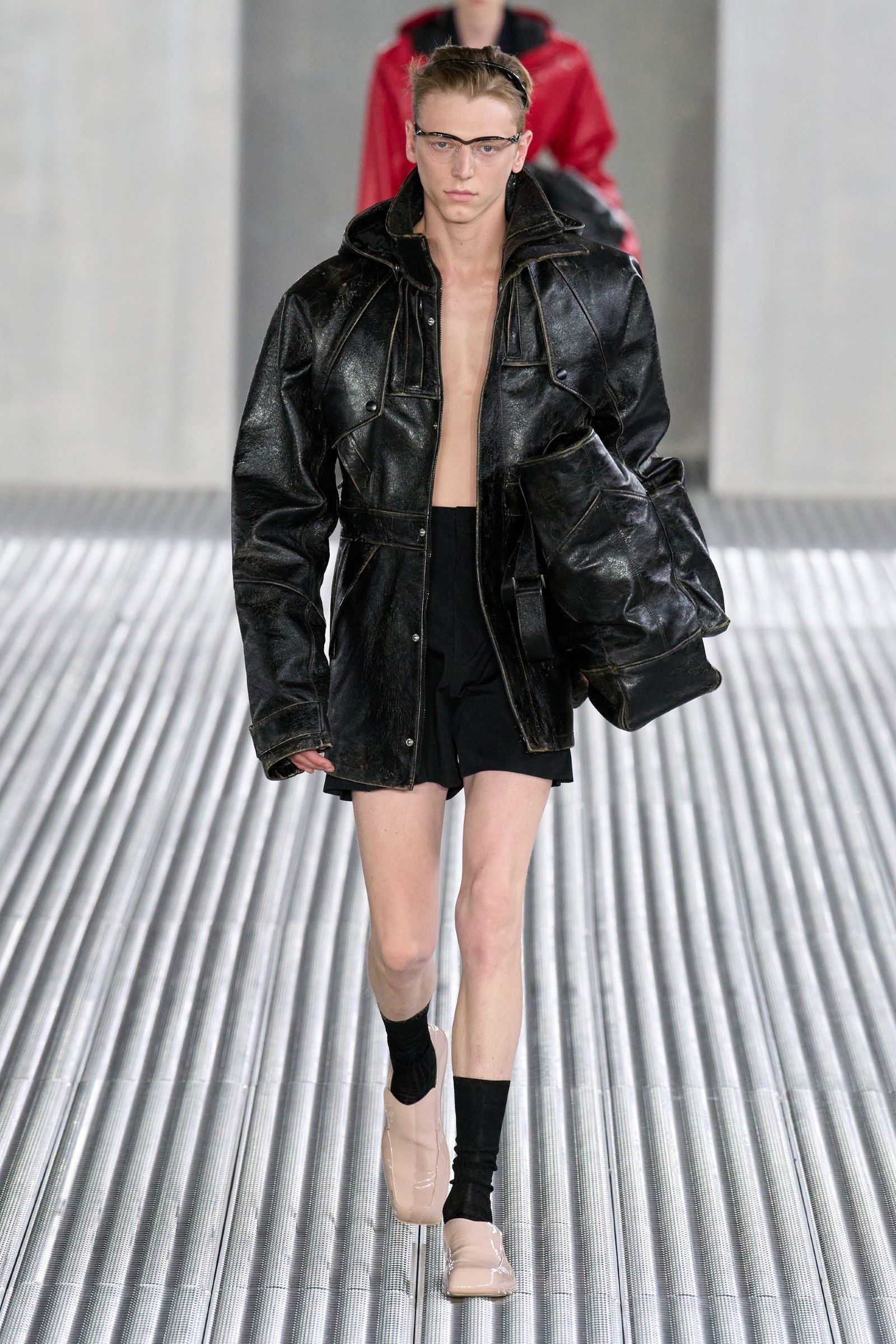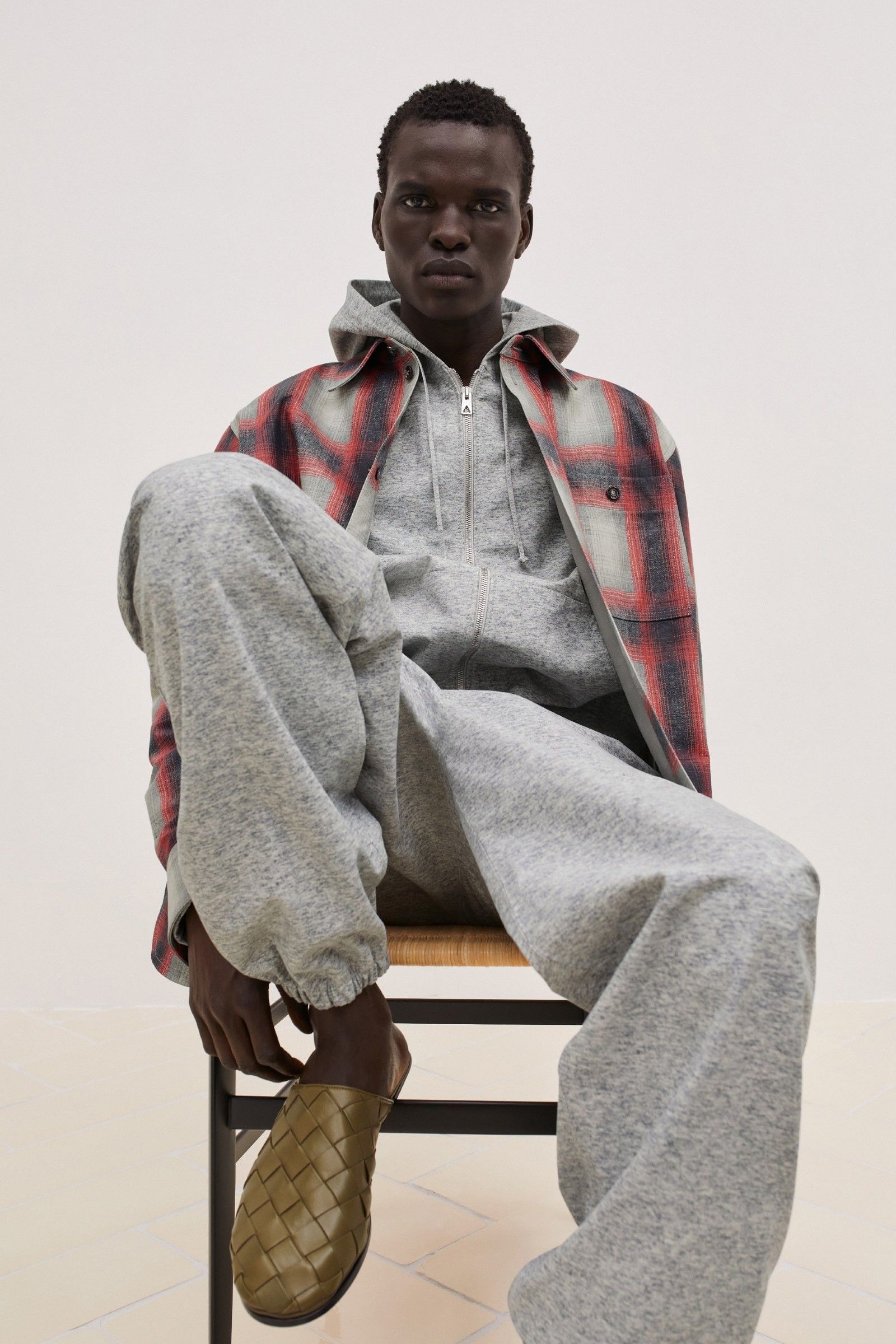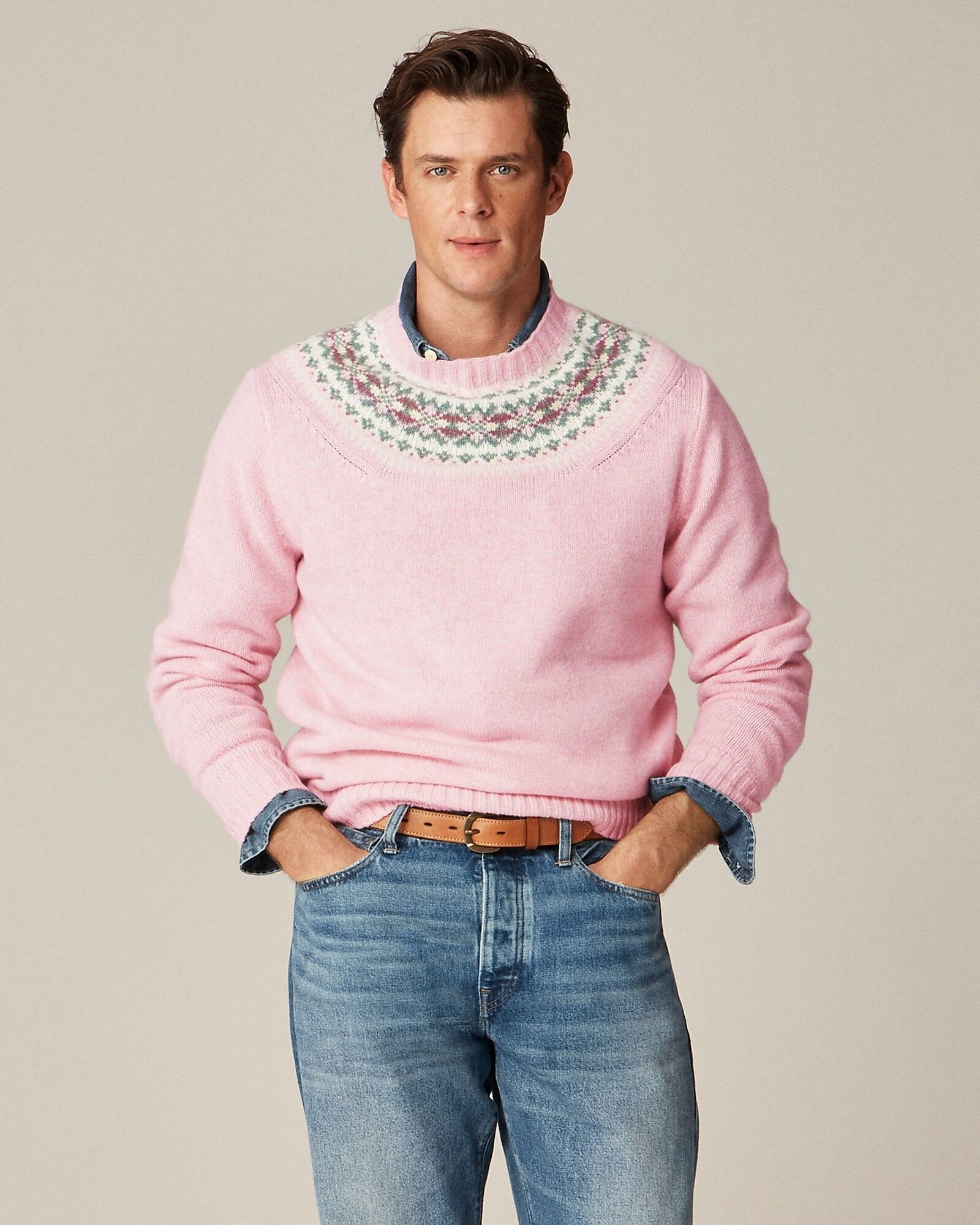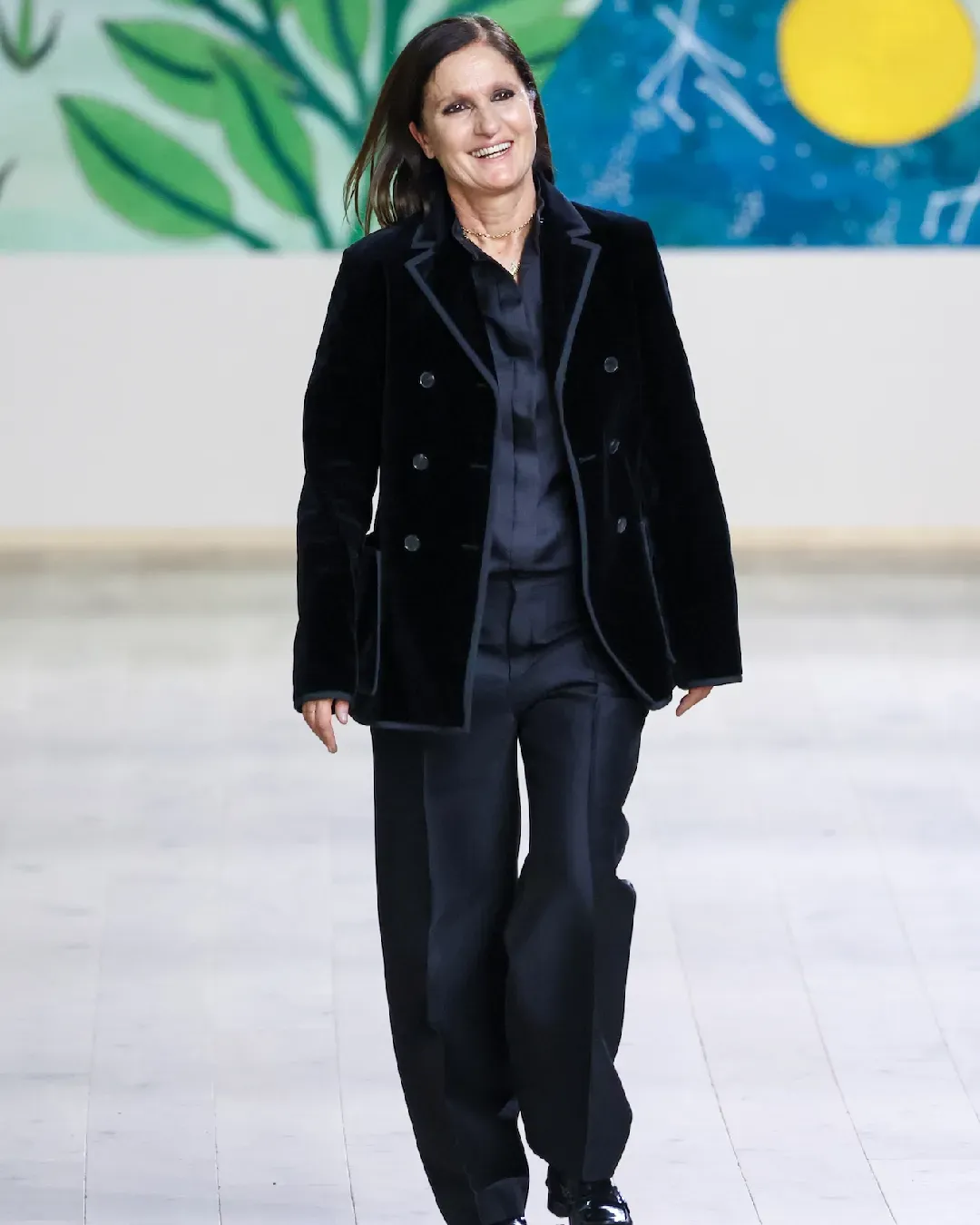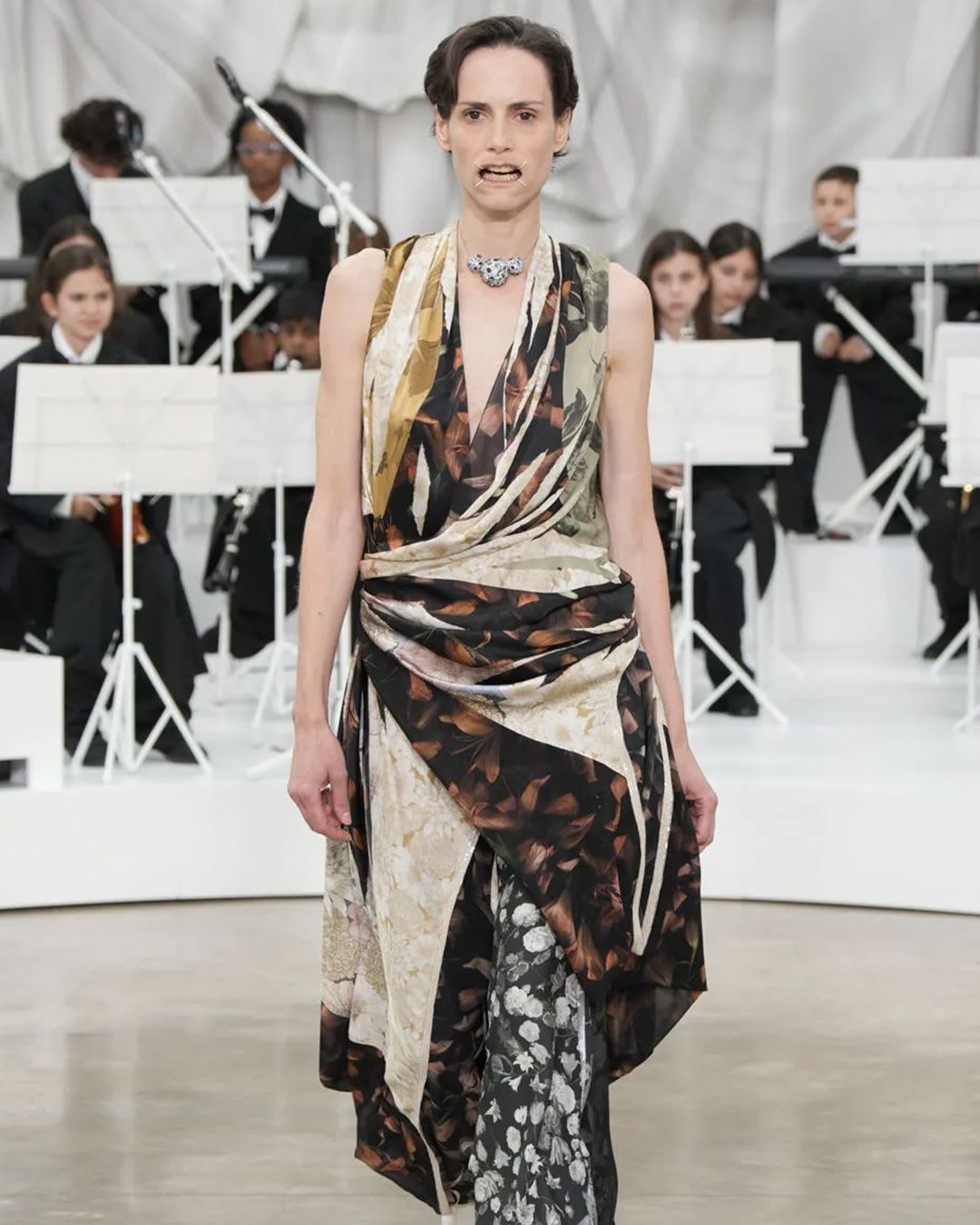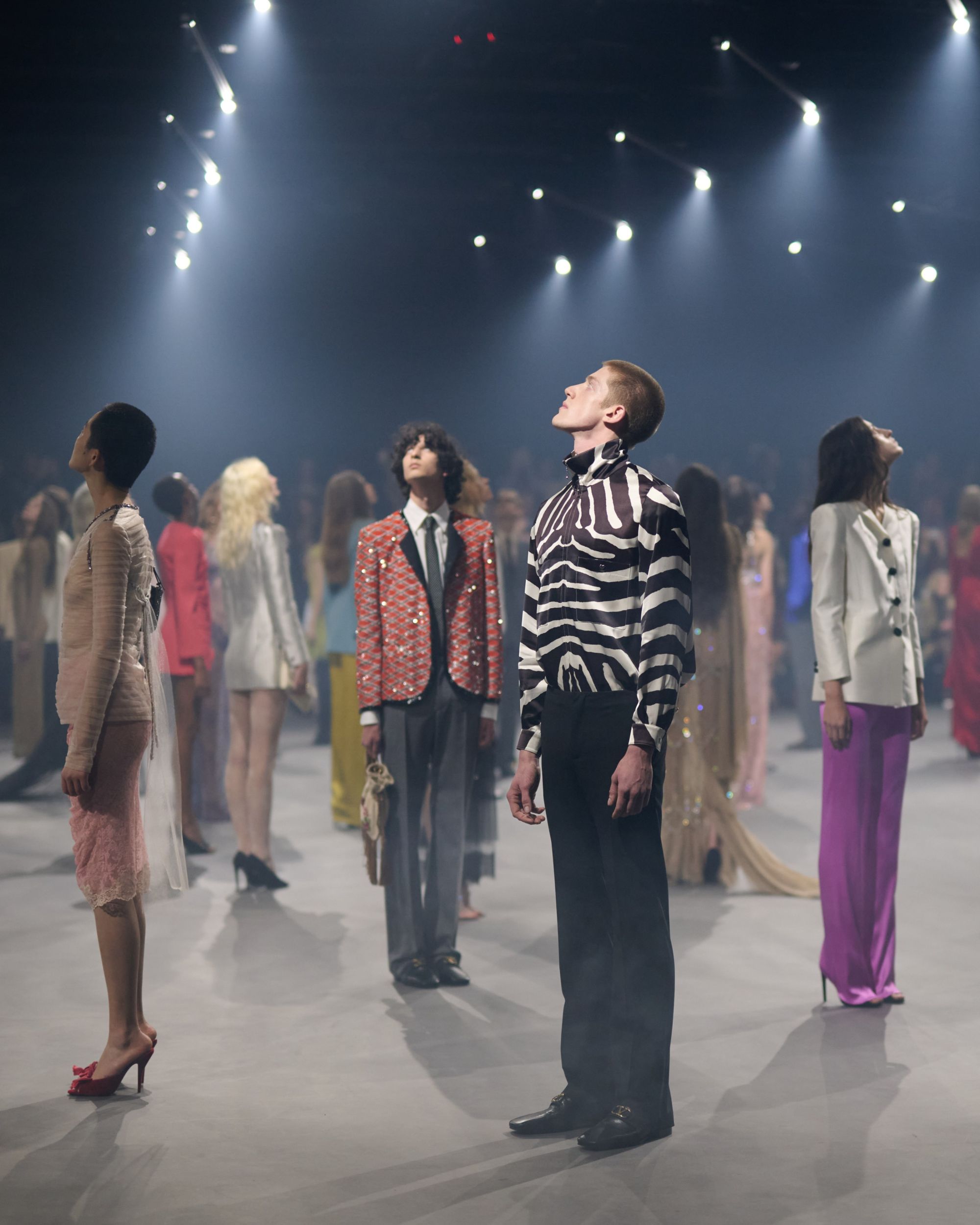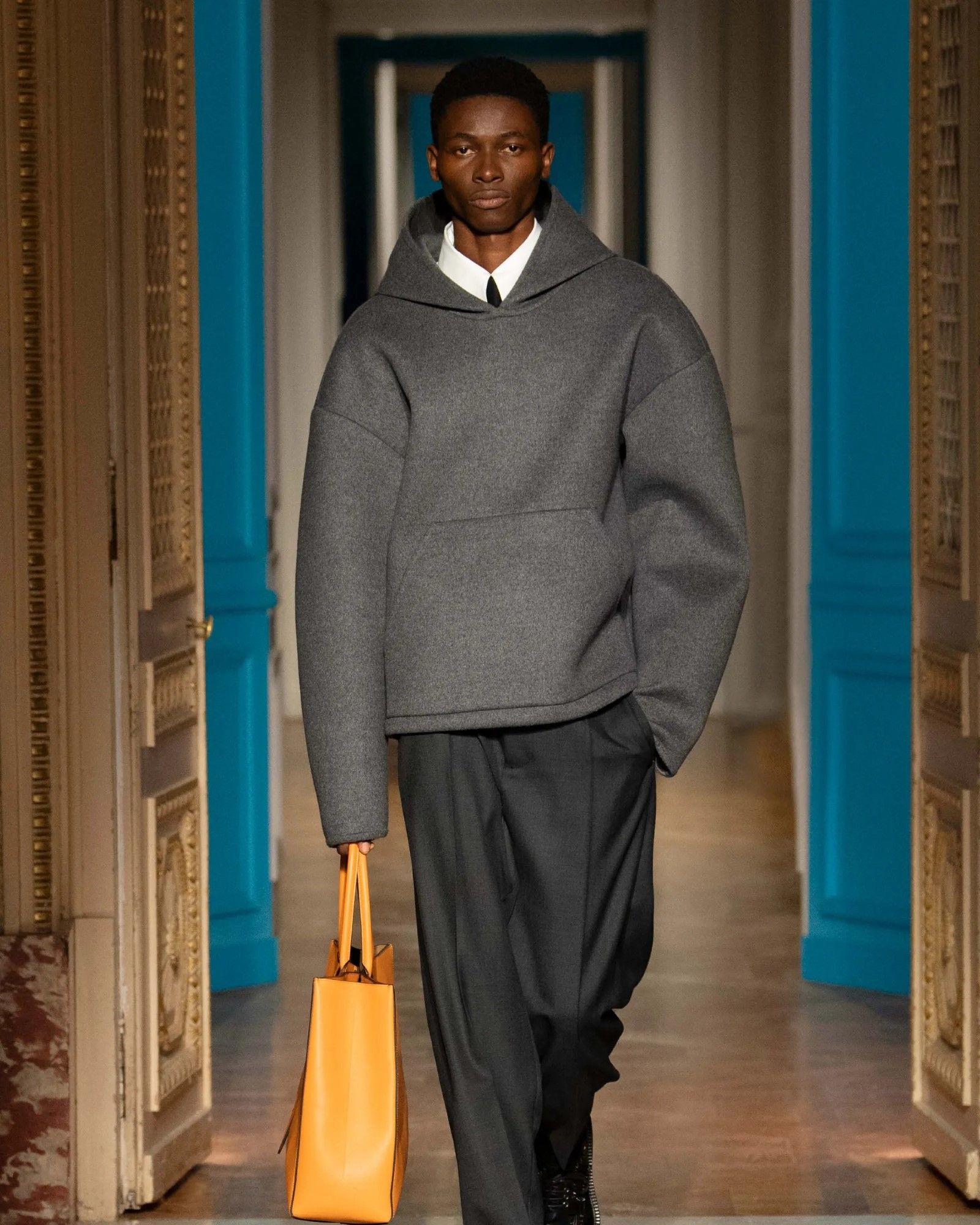
Fashion hoodies are not just hoodies anymore How the classic, prosaic piece is evolving towards luxury
The world of fashion has recently had an obsession with workwear - and this for a variety of reasons, including the popularity and versatility of this type of clothing, but also for the style of its finishes, robust materials, generous volumes, and its fundamentally protective nature. The workwear craze has taken over almost every conceivable category, including the most ubiquitous, everyday garment: the hoodie, which is increasingly becoming a true design piece rather than just a commercial branding vehicle. The first brand to propose this shift was Miu Miu with a collection presented in Paris last March, where numerous jackets and sweatshirts reminiscent of Carhartt WIP classics became a playground between construction robustness and finishing delicacy. Among these, a zip-up hoodie and a jacket with rigid, structured hoods anticipated by at least one season a small boom of hoodies and hooded jackets characterized by ample fit, substantial fabrics, and vaguely rounded proportions. In addition to Miu Miu's, we've seen the compact gray hoodie from Gucci, in the latest men's collection from Valentino, a similar hoodie served as a layering element in different looks with a redesigned hood and neckline to showcase collars and turtlenecks; also, Louis Vuitton featured a jacket with a robust hood in the SS24 show this summer and a neoprene zip-up in the Pre-Fall 2024 in Hong Kong. But examples are numerous: the common thread in all of them is the presence of a hood that stands on its own, both on sweatshirts and outerwear, and the presence of models of, for lack of a better term, industrial origin. But why?
ferragamo-resort-2024.jpg
The most likely hypothesis about the recent (and still ongoing) transformation of hoodies into luxury items concerns materials and the perception of their value. It is undeniable that the major theme of 2023, and obviously also of this year, has been the attempt to enhance the craftsmanship and fabrics of classic garments to emphasize their value - a value that the spread of secondhand, economic crisis, the saturation of alternative-to-luxury brands, and the proliferation of gray markets have seriously questioned. Why pay €1300 for a hoodie if the cotton is fundamentally the same as Uniqlo's? The dilemma is pressing - especially because the younger generations more sensitive to quality discourse have quickly discovered that, regarding hoodies, there are ultra-niche classic brands offering the highest possible quality, such as Camber and Russell Athletic, especially if vintage and produced in the '90s. Therefore, it is necessary to showcase the value of the hoodie not only through the logo, as done in the past, but through a material (neoprene, silk-blend cotton, wool-based fabrics, and even pure leather in the case of Bottega Veneta) that feels more solid to the touch and is distinguishable from "normal" hoodies, that is more performant, and that, in general, justifies a luxury price beyond a simple label and possesses a more clearly sculptural silhouette. Anyone who wears a hoodie paying attention to its fit and construction will tell you that a hood that falls flat, devoid of any volume, is the first sign of a poor product or, at a minimum, an uninteresting one. The same can be said for other elements that determine its wearability, depending on the presence or absence of elastic, the distribution of proportions. Many fast-fashion hoodies, in fact, have a tendency to "fall" lifelessly, hanging loosely, while today a more compact and defined silhouette is generally favored, as well as materials that ennoble it.
prada-ss24.jpg
The same applies to hooded jackets, always present at Valentino with the same voluminous and "self-supporting" shapes in denim version. It's important to note here that we're not referring to jackets that externally appear as padded puffer jackets but adopt the model of the Carhartt WIP Active Jacket. Similar operations have been carried out by Dion Lee, Hermès, Louis Vuitton, and Our Legacy for the Stussy collection; more daringly, brands like Auralee, Balenciaga, Doublet, and MSGM have turned the oversized zip-up into a genuine outerwear piece (the best was Ryota Iwai of Auralee, who paired it with a formal suit), while Nigo, for Kenzo, used a neoprene-like material for a high-necked hoodie without a hood. The change, considering that many brands still don't know how to pull the hoodie out of the category of easy cash grabs, is more than welcome - perhaps it will be the cornerstone of that new contemporary sartorial wardrobe that many menswear designers are talking about today.










































